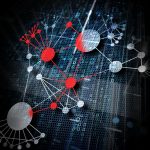What can we expect from the third decade of cloud computing? [Q&A]

Cloud has been a cornerstone of the computing industry for many years. As it enters its third decade in 2024, economic pressures, anti-monopoly moves and more mean things will look different for hyperscale providers.
We spoke to Amol Dalvi, VP of Product of Nerdio, to discuss what we can expect to see over the next 10 years.
New platform improves visibility across attack surfaces

There is an increasing level of crossover and connectivity between IT, operational technology (OT) and IoT assets, which raises the risk of cyberattacks originating in IT systems and then spreading into OT environments.
To help businesses address this risk Tenable is launching a new exposure management platform that provides holistic visibility into assets across IT and OT environments.
Fewer than half of IT leaders confident in their IoT security

A new survey from Viakoo shows that only 50 percent of IT leaders are confident in their Internet of Things security and that 55 percent of IoT cyber incidents could have been prevented with better security measures.
In addition 71 percent say they wish they had started their IoT security efforts differently in order to remediate issues faster.
A smarter society, rise of the robots and security worries -- Internet of Things predictions for 2024

With ever increasing numbers of smart devices in our homes and workplaces, the Internet of Things has become an established facet of everyday life.
But like the rest of the technology industry the IoT isn't standing still. Here are some expert views on the opportunities and risks it's likely to present in 2024.
The challenges of securing the healthcare sector [Q&A]

The healthcare sector is particularly attractive to cybercriminals due to the amount of personal data held and the critical nature of many systems.
We spoke to Shankar Somasundaram, CEO of IoT risk management platform Asimily, to discuss healthcare systems and the challenges involved in securing them.
Why building management system cybersecurity is critical [Q&A]

Building management systems (BMS) are responsible for controlling and monitoring various building services such as HVAC, energy, elevators, escalators, surveillance and access control.
They're crucial for service delivery across industries, including critical infrastructure such as energy, utilities, and healthcare. But they're also a significant of an organization's cyber risk due to their integration with IT networks and the internet.
Building an effective and insurable IoT security policy [Q&A]

As businesses look to manage their cybersecurity risk, many have turned to insurance to cover the financial implications of a successful breach.
However, insurers naturally want to limit their own exposure to risk and the small print of the policy may limit some claims. In particular this can apply to IoT devices which represent a major unprotected attack surface in corporate networks.
Organizations face increased challenges securing IoT devices

We reported earlier today that businesses are struggling with IoT device connectivity, another report out today shows that securing these devices is a major problem too.
The study for Keyfactor, conducted by Vanson Bourne, finds 97 percent are struggling to secure their IoT and connected products to some degree.
Businesses struggle with IoT device connectivity

A new report finds that IoT success is being jeopardized with just one percent of respondents achieving better than 98 percent connectivity levels on average across their devices.
The study, by connectivity solutions specialist Eseye, shows that only 16 percent of respondents are achieving more than 95 percent connectivity. Mission-critical IoT devices -- medical equipment for example -- require near-100 percent connectivity and the fact that companies are prepared to accept poor performance is concerning.
The IT assets that could put your organization at risk

Attackers are always looking for routes that will offer them a way into organizations' networks. New research released today by Armis shows the devices that are most likely to pose a threat.
Interestingly the list includes various personal devices as well as business assets, suggesting attackers care more about their potential access to assets rather than the type and reinforcing the need for security teams to account for all physical and virtual assets as part of their security strategy.
60 percent of healthcare industry cyber incidents impact patient care

A new survey from Claroty of 1,100 cybersecurity, engineering, IT, and networking professionals from healthcare organizations finds 78 percent of respondents experienced a minimum of one cybersecurity incident over the last year.
Perhaps more concerning is that 60 percent of those incidents had a moderate or substantial impact on patient care and 15 percent had a serious impact that compromised patient health and/or safety.
Empowering the partner ecosystem: How businesses can gain resilience connectivity

In today's networked economy, the ability to create value depends primarily on the relationships built with other firms. As a result, strategic and product-related decision-making becomes increasingly complex. This is because a business is viewed as a component of a broader economic ecosystem and environment, where it influences and is influenced by other partners, suppliers, and organizations.
Within a business ecosystem, firms collaboratively and competitively develop innovations and capabilities where they have the capacity and freedom to do so. This enables them to support new products, meet customer needs, and incorporate subsequent waves of further innovation. Platform-based technology frequently supports these ecosystems, serving as foundations for products and services. Suppose businesses want the ability to facilitate transactions between distinct groups of users in a two or multi-sided market. To do this, they need connectivity infrastructure that is robust and reliable enough to support it alongside partners that can enable it.
IoT and digital replicas: Powering up innovation with digital twins

The concept of digital twinning isn’t a new one. More than 40 years ago, NASA used an early form of digital twin technology to bring the Apollo 13 astronauts safely back to Earth. By replicating the real-life conditions of the crippled spacecraft in its simulators, NASA was able to identify the right strategies and procedures for achieving a successful return in the damaged craft and deliver this critical information to Apollo’s flight crew.
Fast forward to today, and digital twin applications are now being deployed by organizations eager to harness the power of virtual prototyping to reinvent their operations. All made possible by the growing prevalence of IoT devices that pull real-time data collected from physical objects, which is used to create digital twins that deliver unprecedented visibility into assets and production processes.
How analytics can boost the supply chain [Q&A]

Whether you're building software or building cars, all businesses rely on some sort of supply chain. For the business to run smoothly the supply chain needs to be as efficient as possible.
We spoke to Fabio Pascali, regional vice president of Cloudera, to find out more about how analytics can contribute to making the supply chain work more efficiently.
Multiple-threat ransomware attacks become more common

It used to be the case that all you had to worry about with ransomware was encrypted data, but the latest Cyberthreat Defense Report (CDR) from CyberEdge Group reveals that last year 78 percent of ransomware victims faced the consequences of one, two or three additional threats unless they paid the ransom.
Additional threats include launching distributed denial of service (DDoS) attacks (42 percent), notifying customers or the media of the data breach (42 percent), and publicly releasing exfiltrated data (40 percent).
Recent Headlines
BetaNews, your source for breaking tech news, reviews, and in-depth reporting since 1998.
© 1998-2025 BetaNews, Inc. All Rights Reserved. About Us - Privacy Policy - Cookie Policy - Sitemap.